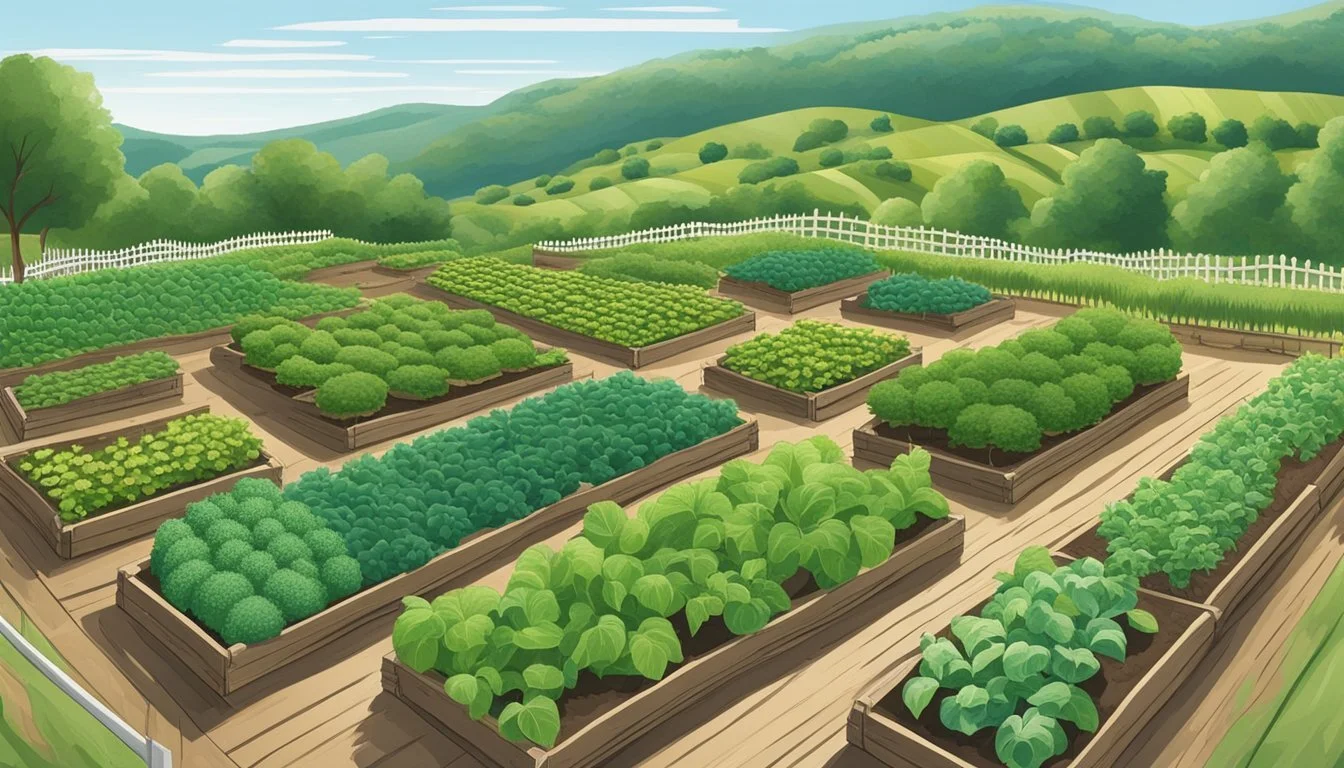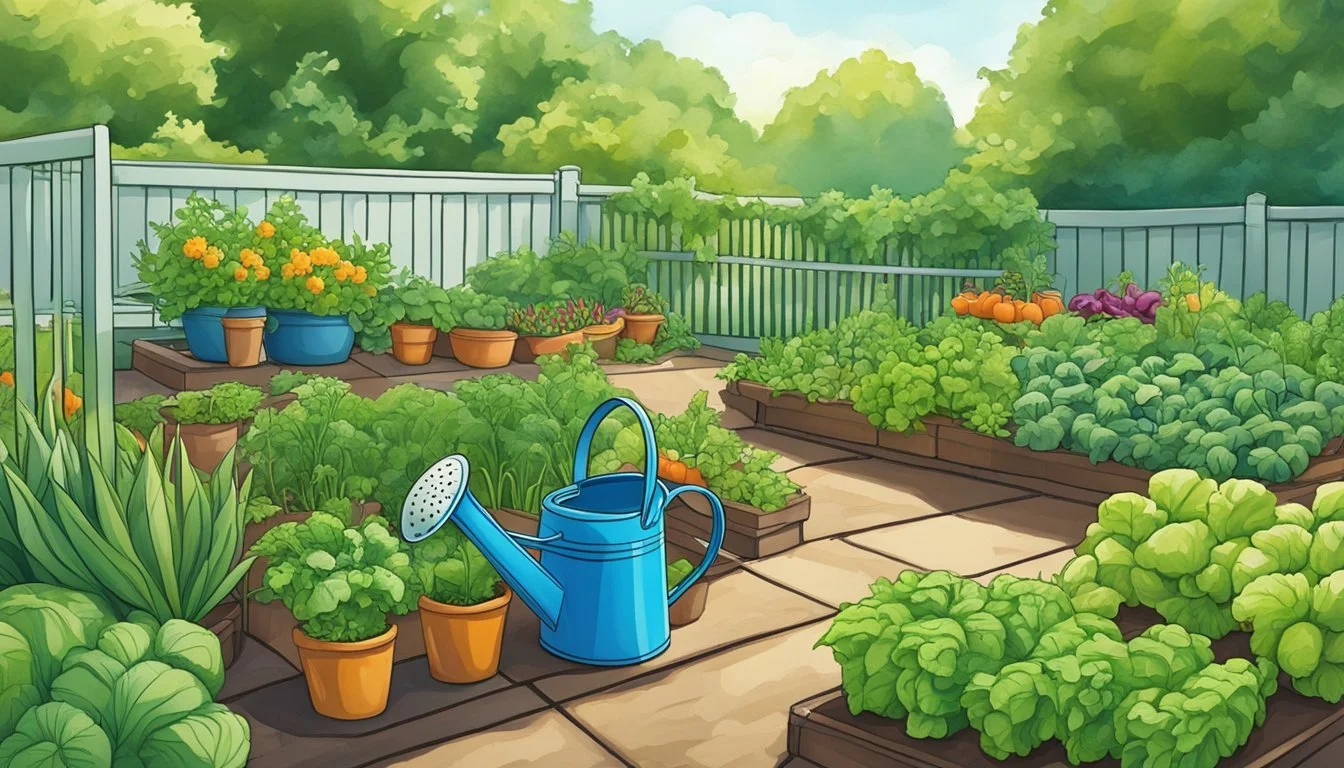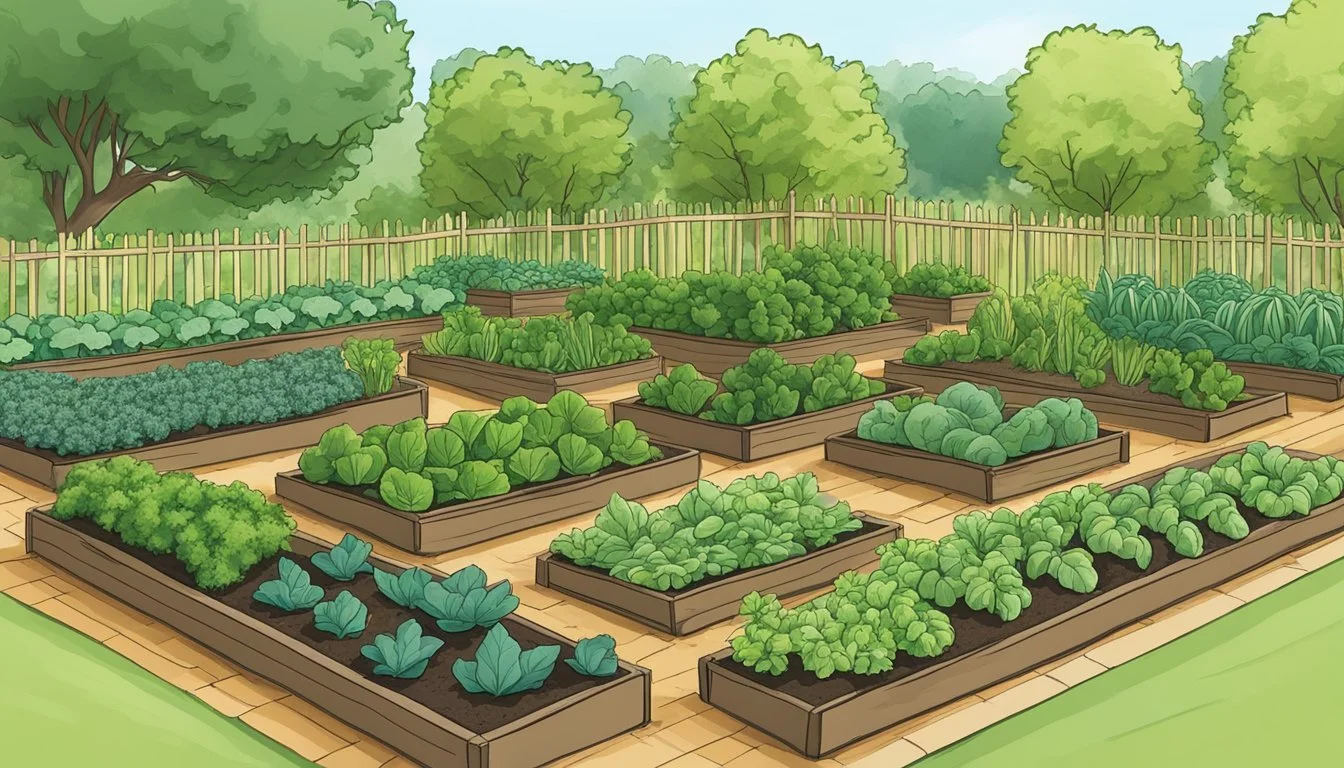Vegetable Gardening in Pennsylvania
A Seasonal Guide
This Article is Part of Our Guide on Vegetable Gardening by State
Vegetable gardening in Pennsylvania offers a rewarding experience for both novice and experienced gardeners due to the state's varied climate and fertile soils. The Keystone State spans across USDA plant hardiness zones 5 through 7, providing a diverse growing environment that supports a wide range of vegetables. Gardeners in Pennsylvania can benefit from the cold-hardy nature of certain vegetables, such as lettuce, which can thrive even during the cooler spring and fall months, often capable of withstanding frost and snow.
The state's gardening calendar is specifically tailored to its unique climate zones, suggesting optimal planting times to maximize yield and sustainability. Root vegetables, leafy greens, and brassicas are among the vegetables best suited to Pennsylvania's conditions, because they can grow in cooler temperatures and have a relatively short growing season. This makes these vegetables excellent choices for extending the harvest period and ensuring a continual supply of fresh produce.
Knowledge of Pennsylvania's first and last frost dates is crucial for gardeners to start their seeds (how long do seeds last?) at the right time and protect their crops from unexpected temperature drops. By following a Pennsylvania-specific planting calendar, gardeners can navigate the seasonal challenges and take advantage of the state's favorable growing conditions. With the right preparations and plant selection, vegetable gardening in Pennsylvania can be a fruitful endeavor.
Getting Started in Vegetable Gardening
To cultivate a thriving vegetable garden in Pennsylvania, understanding the specific regional conditions and preparing adequately are fundamental steps. Proper site selection, knowledge of hardiness zones, and the use of suitable tools can pave the way for a productive gardening experience.
Understanding Pennsylvania's Climate Zones
Pennsylvania encompasses USDA hardiness zones 5 through 7, indicating diverse climates across the state. Zone 5 gardeners will face the coldest conditions, suitable for cold-hardy crops, while zone 7 can support a more extensive variety of vegetables due to milder winters.
Choosing the Right Site for Your Garden
Your garden should receive six to eight hours of sunlight daily, crucial for vegetables like tomatoes and peppers. Assess your space for sunlight exposure as well as protection from wind and proximity to water sources for optimal plant growth.
Garden Planning and Design
Layouts should maximize space, potentially incorporating raised beds or vertical gardening elements. Begin with easy-to-grow vegetables like radishes or lettuce and plan for crop rotation to maintain soil health.
Essential Tools and Supplies
Start with essentials such as a trowel, pruning shears, gloves, and a watering can. For larger spaces, invest in a wheelbarrow and digging tools like forks and shovels.
Soil Preparation and Improvement
Healthy soil rich in organic matter is key. Test the soil pH and fertility and amend with compost or organic material as needed to create the ideal conditions for vegetables to flourish.
Starting Seeds Indoors
For a head start, sow seeds like tomatoes and peppers indoors 6-8 weeks before the last expected frost. Use seed-starting mix and trays to enable proper growth.
Selecting Vegetable Varieties
Choose vegetables suited to Pennsylvania's climate. Lettuce, peas, and spinach are ideal for cooler seasons, while sweet corn, tomatoes, and cucumbers thrive in summer warmth.
Raised Bed and Container Gardening
Raised beds can improve drainage and soil quality. For urban gardening or limited spaces, containers allow for control over soil conditions and can bring gardening to any home space.
Native Plants and Biodiversity
Incorporating native plants can attract beneficial insects and support local ecosystems. Add variety to your garden to enhance biodiversity.
Propagation Techniques
Learn methods like seed saving, cuttings, or division to expand your garden. These techniques can save money and allow for greater customization of your home garden.
Transplanting Seedlings
Transplant seedlings to the garden after the risk of frost passes. Harden off plants by gradually introducing them to outdoor conditions to reduce transplant shock.
Each step in this process is significant, from knowing the hardiness zone to selecting the right tools and understanding the best times for planting. A well-prepared Pennsylvania garden is a source of pleasure and provides a bounty of fresh produce.
Maintaining a Healthy Garden
To ensure a thriving vegetable garden in Pennsylvania, gardeners must be diligent in routine activities. These include effective watering and mulching, controlling weeds organically, proper pruning, managing pests and diseases, supporting beneficial insects and pollinators, and adapting to seasonal changes.
Watering and Mulching
Watering deeply and less frequently encourages strong root growth and helps plants withstand periods of drought. Mulching conserves moisture, regulates soil temperature, and reduces weed growth. A layer of organic mulch, such as straw or shredded leaves, should be applied to a depth of about 2 to 4 inches.
Organic Weed Control
Weeding is essential to prevent competition for nutrients and water. They should remove weeds close to the root to discourage regrowth, ideally before they go to seed. Using natural mulches or landscape fabric can also inhibit weed germination.
Pruning and Training Plants
Regular pruning removes dead or diseased foliage and improves air circulation, reducing the risk of fungal infections. For plants like tomatoes, pruning is essential and can be great for vertical gardening structures, encouraging a more productive crop. Gardeners should also train plants to grow on supports like trellises, which can maximize space and improve light exposure.
Managing Pests and Diseases
Prevention is key in managing pests and diseases. Gardeners should identify problems early and respond promptly. Common pests like aphids, stinkbugs, and fruit worms can be managed through manual removal or organic pesticides. For diseases such as buckeye rot or fungus, they should remove and destroy infected plants. Crop rotation and resistant plant varieties can also reduce problems.
Supporting Pollinators and Beneficial Insects
Ensuring a garden supports pollinators and beneficial insects is crucial. They can plant flowers to attract these allies, as they play a key role in the reproductive cycle of many plants and help control pest populations naturally.
Seasonal Garden Care
Gardeners must be aware of the frost date and plant or harvest accordingly. Protection against early and late frosts can include covers or row tunnels. With vigilant care, they can also protect the garden from common wildlife pests such as deer, rabbits, and squirrels by using fencing or natural repellents.




